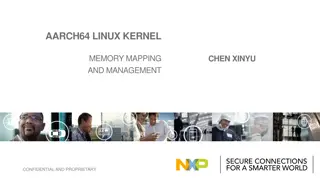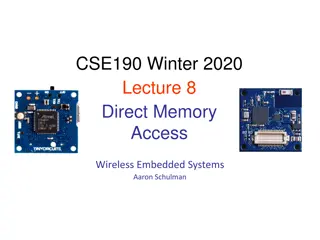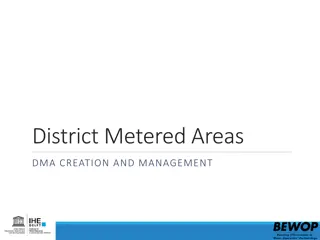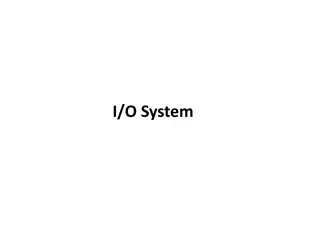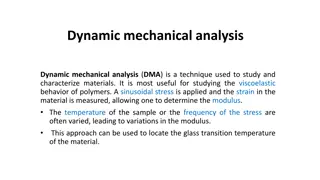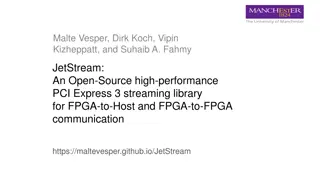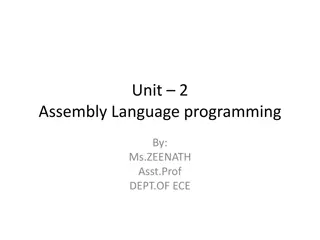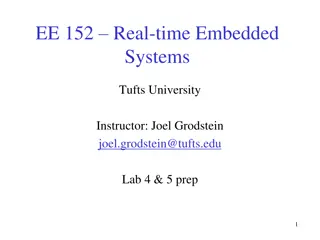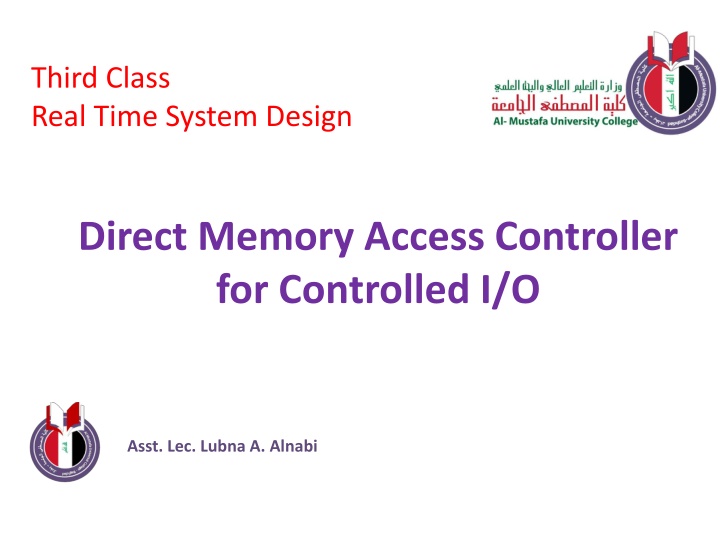
Real Time System Design: Direct Memory Access Controller
Learn about Direct Memory Access (DMA) controllers in real-time system design for efficient data transfer between I/O devices and main memory. Understand the working principle, signals for DMA, basic definitions, and the role of DMA controllers in computer systems.
Download Presentation

Please find below an Image/Link to download the presentation.
The content on the website is provided AS IS for your information and personal use only. It may not be sold, licensed, or shared on other websites without obtaining consent from the author. If you encounter any issues during the download, it is possible that the publisher has removed the file from their server.
You are allowed to download the files provided on this website for personal or commercial use, subject to the condition that they are used lawfully. All files are the property of their respective owners.
The content on the website is provided AS IS for your information and personal use only. It may not be sold, licensed, or shared on other websites without obtaining consent from the author.
E N D
Presentation Transcript
Third Class Real Time System Design Direct Memory Access Controller for Controlled I/O Asst. Lec. Lubna A. Alnabi
Direct Memory Access Controller for Controlled I/O The direct memory access (DMA) I/O technique provides direct access to the memory while the microprocessor is temporarily disabled. To transfer large blocks of data at high speed between an external device and the main memory without continuous intervention by the processor. This approach is called Direct Memory Access (DMA). I/O devices are connected to system bus via a special interference circuit known as DMA Controller .
Direct Memory Access Controller for Controlled I/O The direct memory access (DMA) I/O technique provides direct In DMA, both CPU and DMA controller have access to main memory via a shared system bus having data, address and control lines. A DMA controller temporarily borrows the address bus, data bus, and control bus from the microprocessor and transfers the data bytes directly between an I/O port and memory locations (During DMA transfer, the CPU is idle and no control of the memory buses). The DMA transfer is also used to do high-speed memory-to memory transfers.
8085 signals for DMA:- Two control signals are used to request and acknowledge a direct memory access (DMA) transfer in the microprocessor-based system. The HOLD signal as an input (to the processor) is used to request a DMA action. The HLDA signal as an output that acknowledges the DMA action. When the processor recognizes the hold, it stops its execution and enters hold cycles. HOLD input has higher priority than INTR. The only microprocessor pin that has a higher priority than a HOLD is the RESET pin. HLDA becomes active to indicate that the processor has placed its buses at high-impedance state.
Basic DMA Definitions: Direct memory accesses normally occur between an I/O device and memory without the use of the microprocessor. A DMA read transfers data from the memory to the I/O device. A DMA write transfers data from an I/O device to memory. The Memory & the I/O are controlled simultaneously. The DMA controller provides memory with its address, and the controller signal selects the I/O device during the transfer. Data transfer speed is determined by speed of the memory device or a DMA controller. In many cases, the DMA controller slows the speed of the system when transfers occur.
DMA controller: A DMA controller implements direct memory access in a computer system. It connects directly to the I/O device at one end and to the system buses at the other end. DMA controller is part of the I/O interface. Its Performs the functions that would normally be carried out by the processor when access main memory. For each word transferred, it provides the memory address and all the bus signals that control data transfer.
DMA Data Transfer:- Steps of data transfer technique directly between memory and I/O device: I/O device asserts DMA Request signal. DMA controller sends HOLD signal to CPU CPU sends HLDA back to DMA controller DMA controller sends DMA acknowledgment back to I/O. DMA controller starts data transfer. When Data transfer process is over, DMA controller sets HOLD=0 Processor regains control of system bus.

